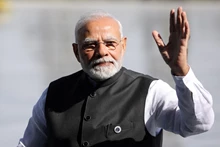
A section of the industry has questioned the rationale behind the inclusion of monocrotophos, considered one of the most dangerous pesticides for human health, in the list of 24 for which a ban was lifted by a draft order issued in February 2023, ahead of the Supreme Court (SC) hearing scheduled for April 28 on the controversy over a ban on 27 pesticides.
Representatives of civil society, however, are questioning the draft on a fundamentally different basis. They argued that the decision to weaken the initial order banning all 27 pesticides is incorrect and ignored a number of crucial elements.
From March 27, 2023, the SC sought the Centre’s reply in four weeks clarifying the basis on which the original ban order was transposed and also placing on record the reports of the committee formed to analyze the ban.
Dating back to a May 2020 controversy, the order from the government banned the sale, import, manufacture, distribution, transport, and use of 27 pesticides that were considered harmful to public safety and health.
These 27 pesticides were extensively used as part of the 66 controversial pesticides that were being audited by several bodies over the past few years for their toxicity. Some reports said the banned pesticides included 12 insecticides, 8 fungicides, and 7 herbicides, comprising almost 130 formulations.
The issue was not resolved even though the government reportedly gave the industry time to record their objections. At the request of various chief industrial bodies, a panel was formed under the chairmanship of T P Rajendran, former assistant director general of ICAR and a well-known expert in the field. Though the results of this committee’s inferences were not made public, reports advocated that it had recommended continuing the ban on three of the 27 pesticides and liberating the remaining ones.
There are some uncertainties regarding the contents of the inferences and terms of reference of the committee itself.
The reason why monocrotophos has not been kept on the list of banned pesticides in spite of being on the WHO list of injurious chemicals, Rajendran said that the prior formulation that was registered in the nation was on the greater side of toxicity and the manufacturers had come out with a new formulation which is already registered with the CIB and the old one has been withdrawn.
Specifying good agriculture practices, all pesticides have a label on them with the right dosage, precautions to be taken, time of application, and so on. If somebody violates that, it is the individual’s problem and not a national or a government issue. The arguments that will convince the Apex Court are still to be determined.









